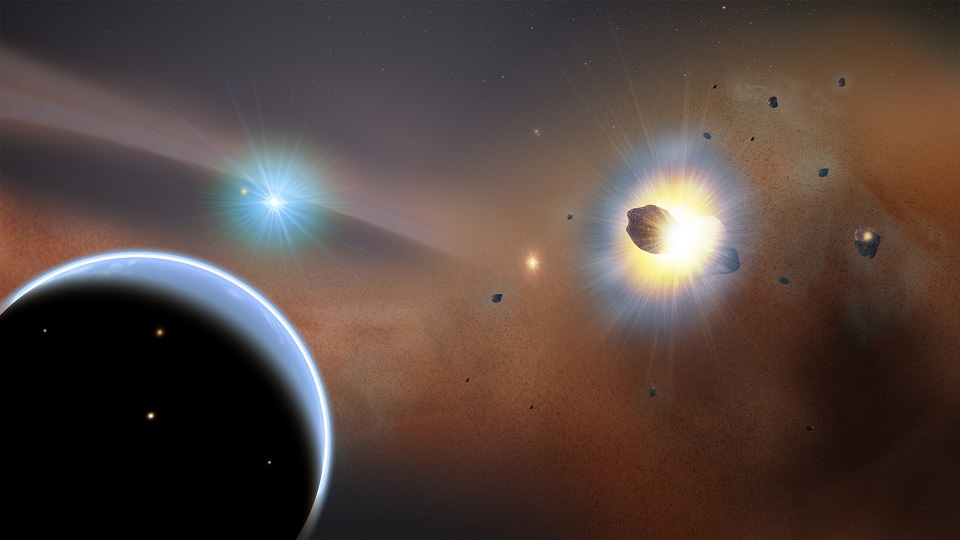A Saturn-mass planet might be lurking in the debris surrounding Beta Pictoris, new measurements of a debris field around the star shown. If this could be proven, this would be the second planet found around that star.
The planet would be sheparding a giant swarm of comets (some in front and some trailing behind the planet) that are smacking into each other as often as every five minutes, new observations with the Atacama Large Millimeter/submillimeter Array (ALMA) show. This is the leading explanation for a cloud of carbon monoxide gas visible in the array.
“Although toxic to us, carbon monoxide is one of many gases found in comets and other icy bodies,” stated Aki Roberge, an astrophysicist at NASA’s Goddard Space Flight Center in Maryland who participated in the research. “In the rough-and-tumble environment around a young star, these objects frequently collide and generate fragments that release dust, icy grains and stored gases.”
ALMA captured millimeter-sized light from carbon monoxide and dust around Beta Pictoris, which is about 63 light-years from Earth (relatively close to our planet). The gas seems to be most prevalent in an area about 8 billion miles (13 kilometers) from the star — the equivalent distance of three times the length of Neptune’s location from the sun. The carbon monoxide cloud itself makes up about one-sixth the mass of Earth’s oceans.
Ultraviolet light from the star should be breaking up the carbon monoxide molecules within 100 years, so the fact there is so much gas indicates something must be replenishing it, the researchers noted. Their models showed that the comets would need to be destroyed every five minutes for this to happen (unless we are looking at the star at an unusual time).
While the researchers say they need more study to see how the gas is concentrated, their hypothesis is there is two clumps of gas and it is due to a big planet behaving similarly to what Jupiter does in our solar system. Thousands of asteroids follow behind and fly in front of Jupiter due to the planet’s massive gravity. In this more distant system, it’s possible that a gas giant planet would be doing the same thing with comets.
If the gas turns out to be in just one clump, however, another scenario would suggest two Mars-sized planets (icy ones) smashing into each other about half a million years ago. This “would account for the comet swarm, with frequent ongoing collisions among the fragments gradually releasing carbon monoxide gas,” NASA stated.
The research was published yesterday (March 6) in the journal Science and is led by Bill Dent, a researcher at the Joint ALMA Office in Chile. You can read more information in press releases from NASA, the National Radio Astronomy Observatory and European Southern Observatory.


c’mon “Giant planet lurks in poisonous gas”? You forgot to link it with Princess Diana’s death.